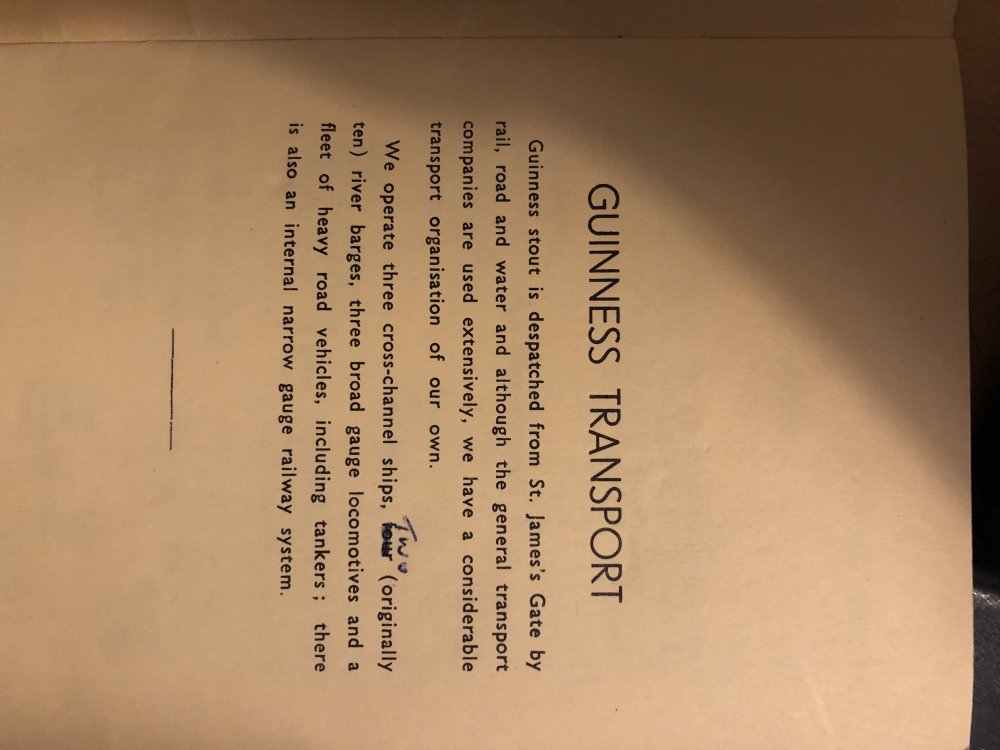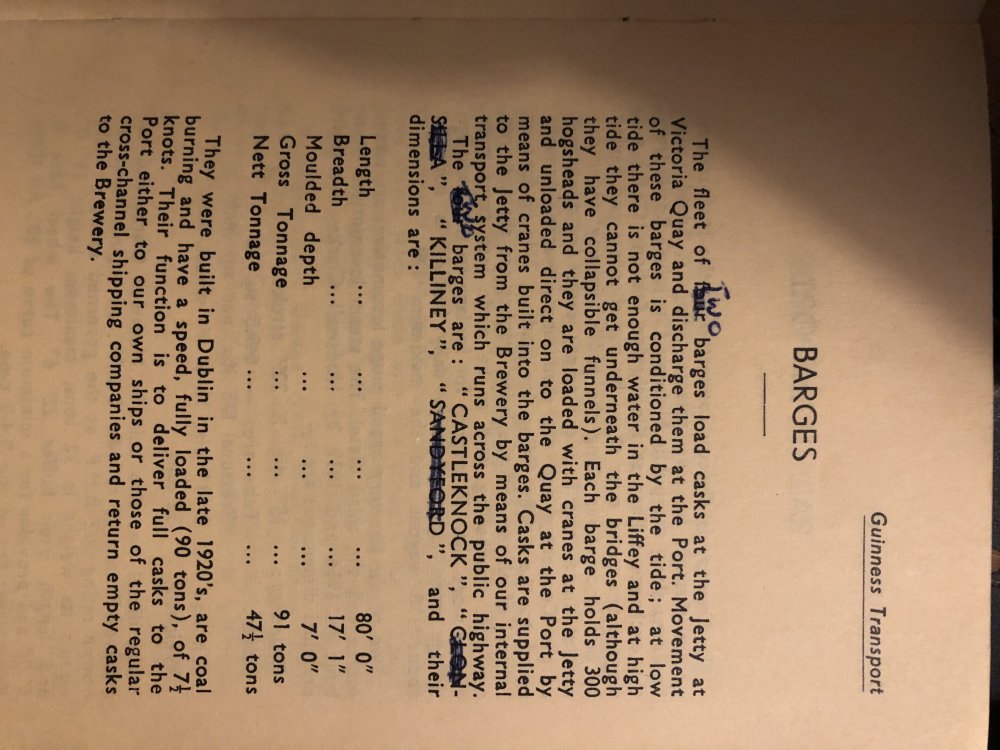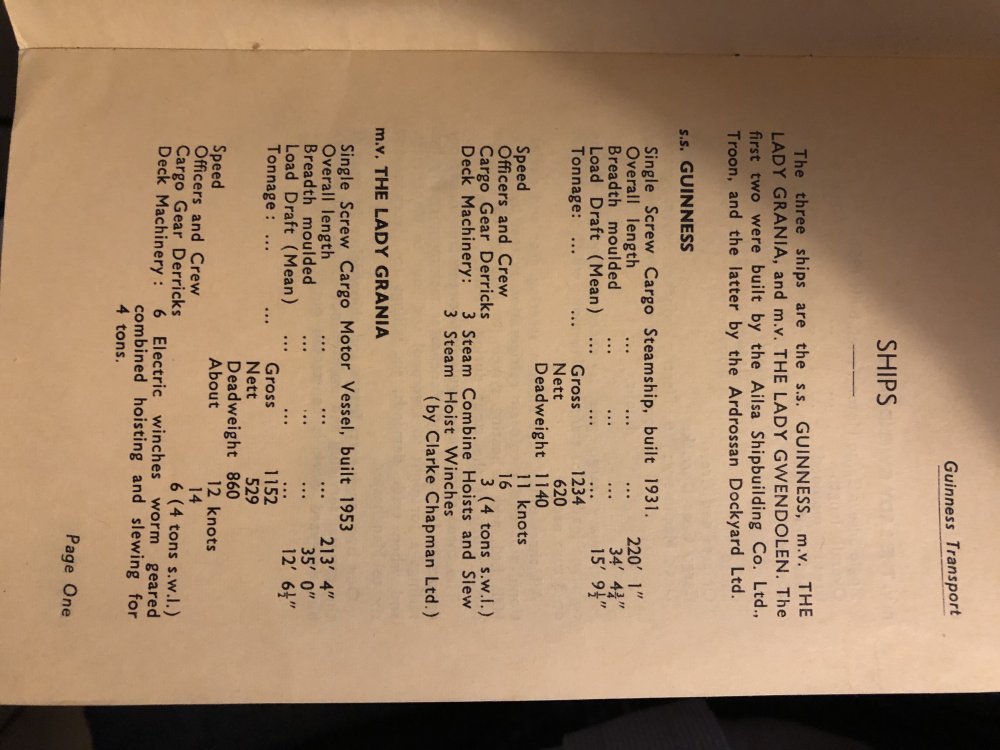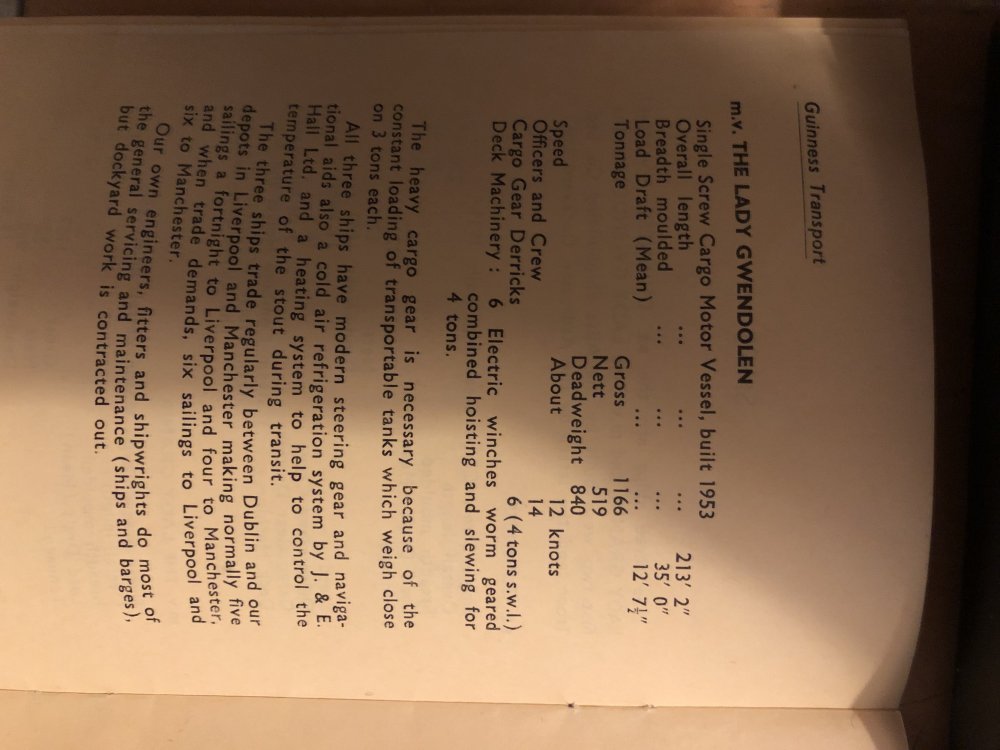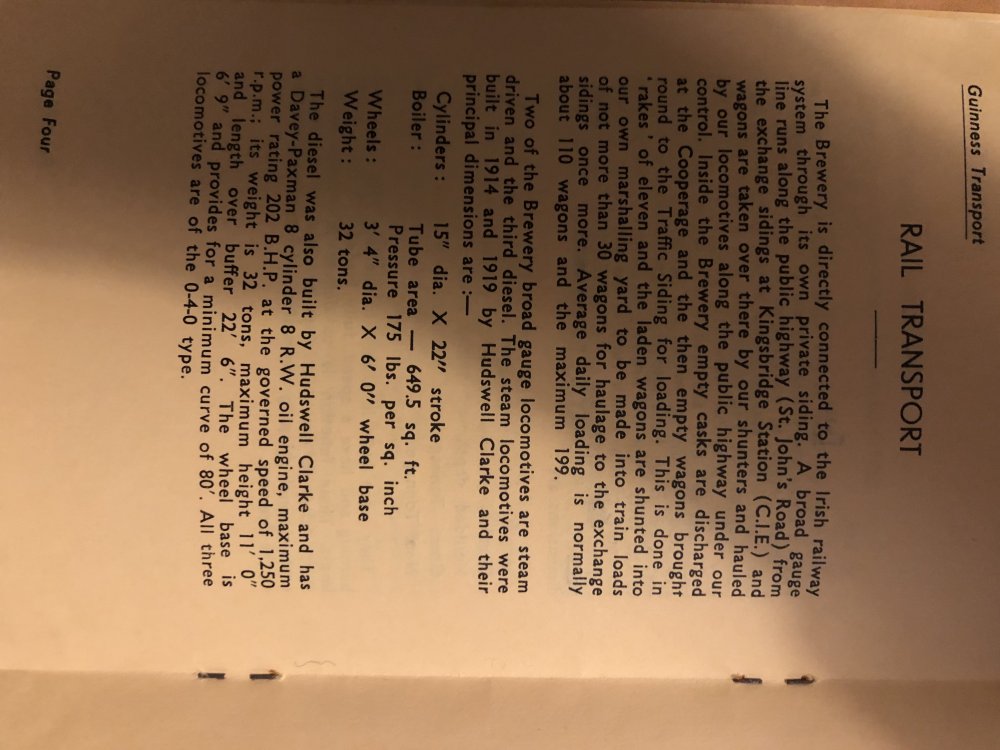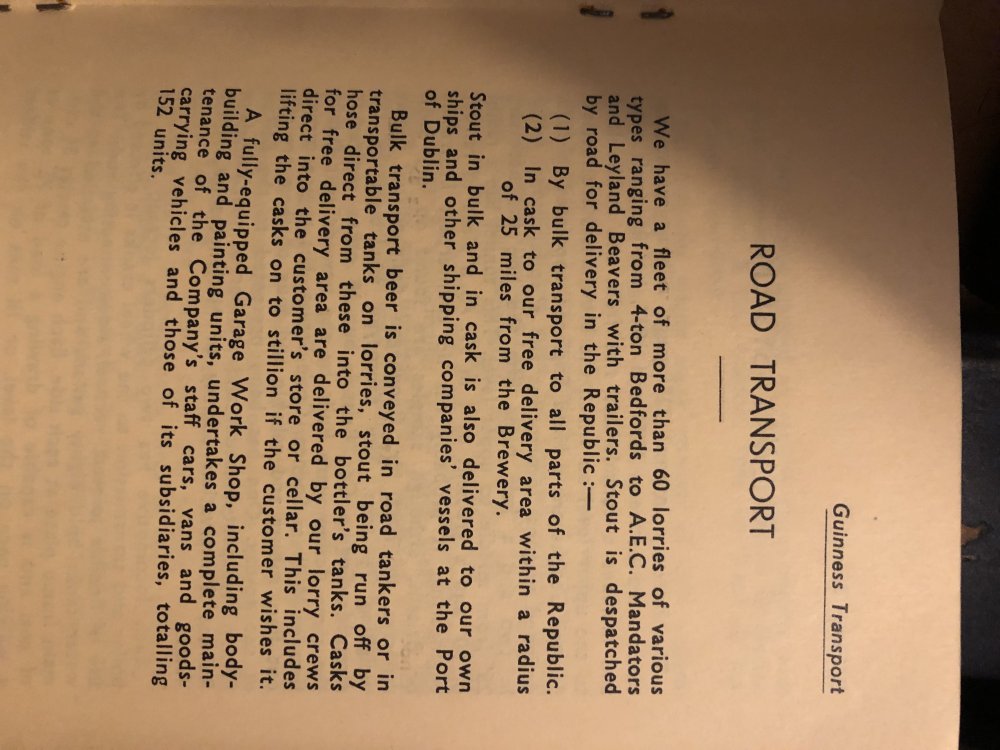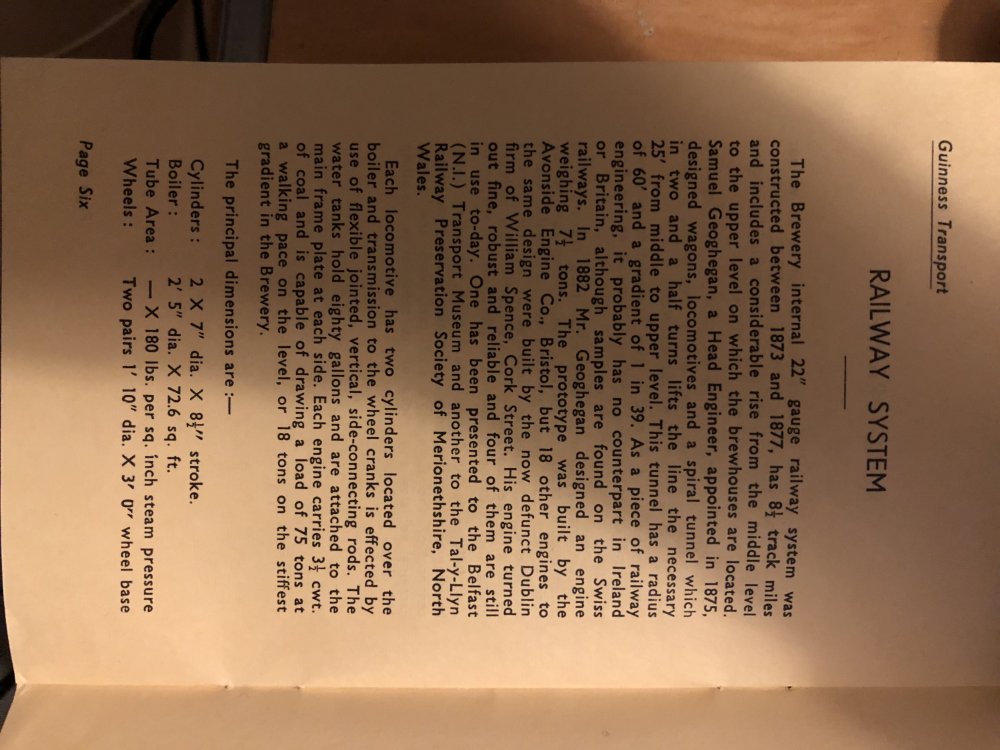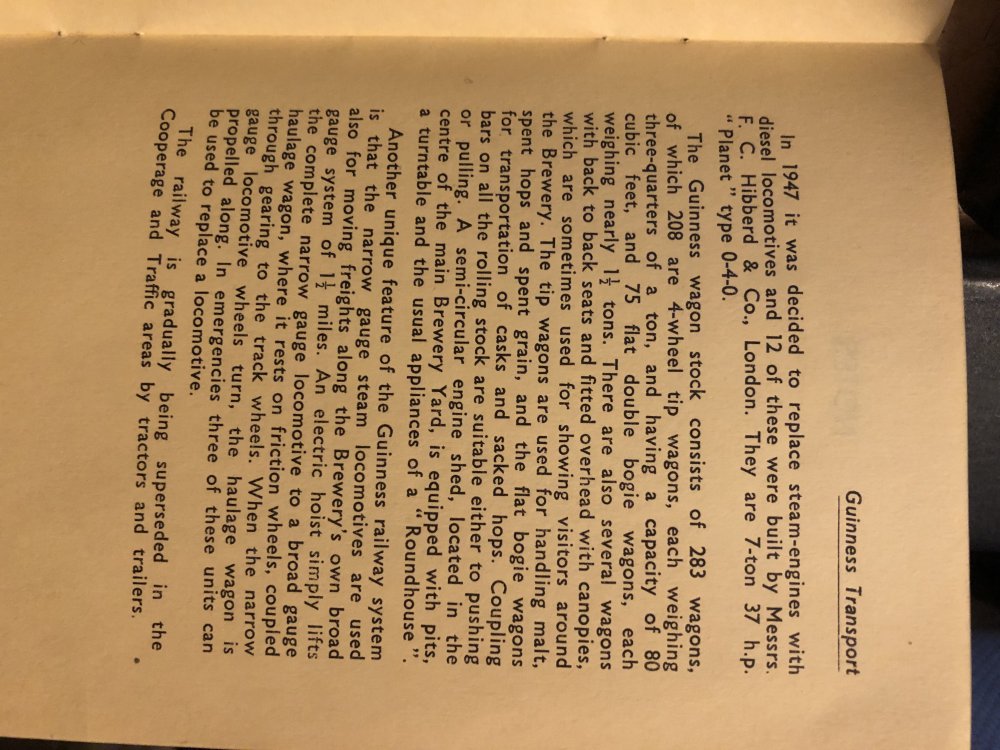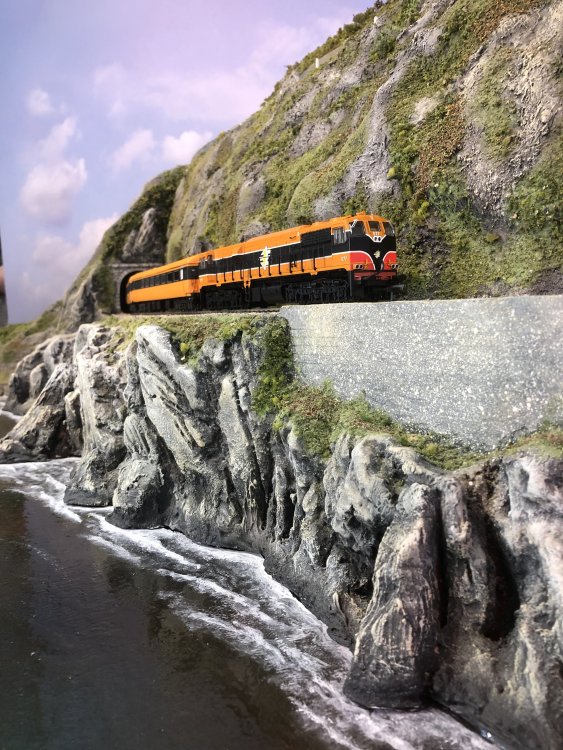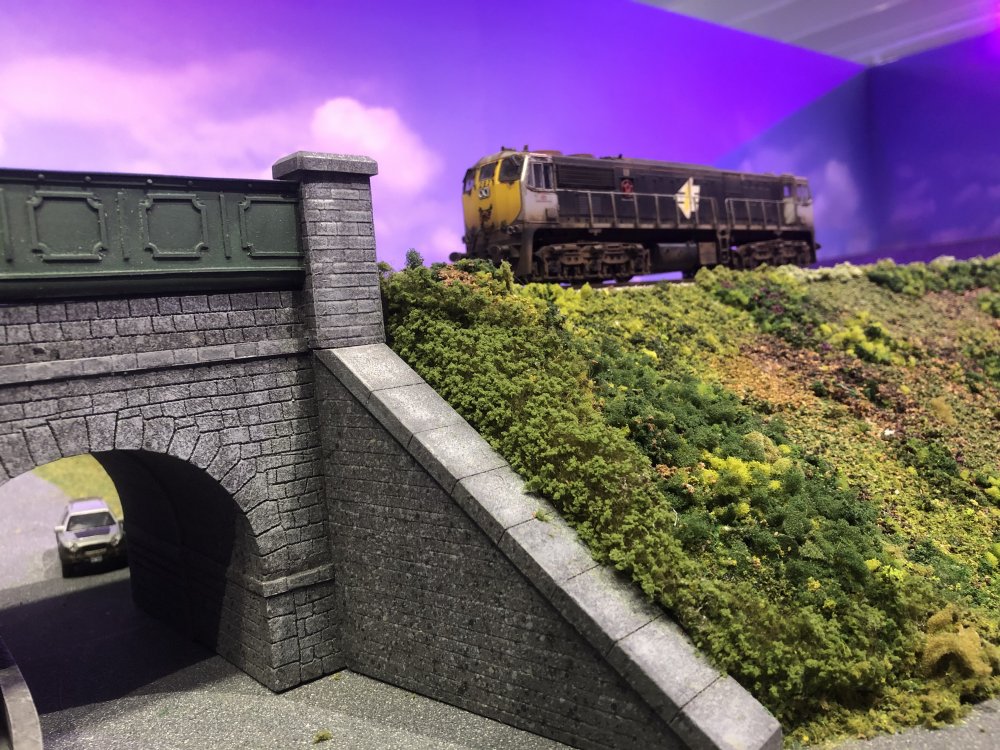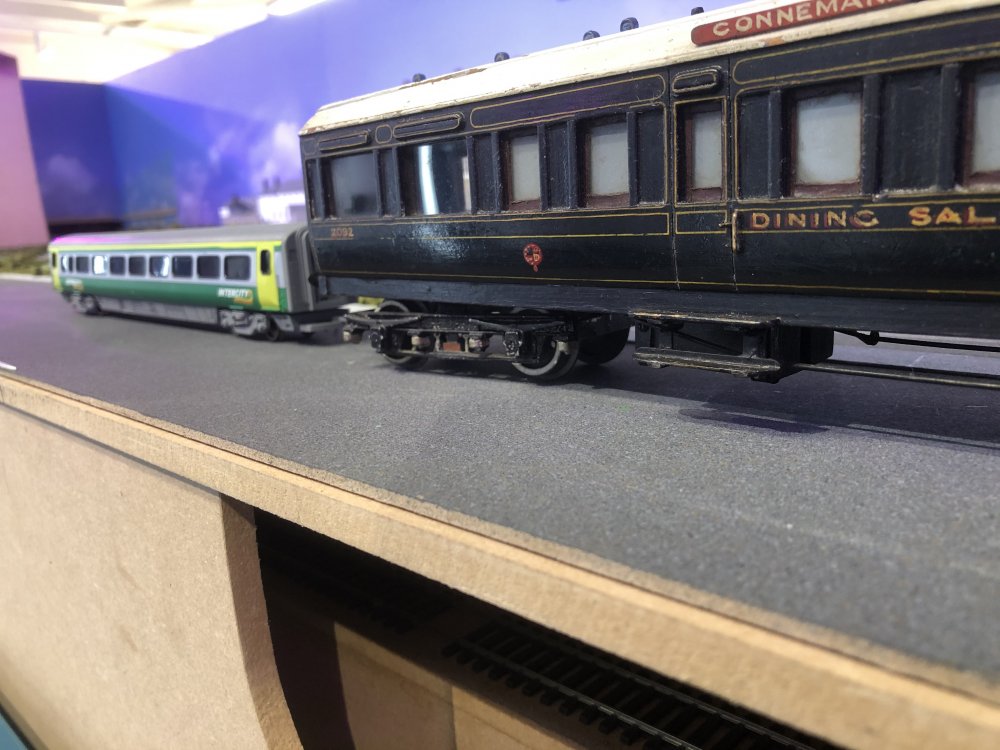-
Posts
15,934 -
Joined
-
Last visited
-
Days Won
394
Content Type
Profiles
Forums
Events
Gallery
Blogs
Community Map
Everything posted by jhb171achill
-
Caldercraft Talacre - Steam Ship Finished.
jhb171achill replied to Georgeconna's topic in Aviation & Maritime Modelling
Wow!!!! That is a VERY nice-looking beast! -
Indeed. It is reminiscent of the even crazier scheme to build the Ulster & Connaught Railway in 1909. This would have had a railway line running from - wait for it - Greenore - to CLIFDEN!!! Over 200 miles of NARROW GAUGE track, serving not one single solitary place of any significance or size along its entire route, except Newry. Tempting though it is to any railway historian, it is a good thing it was never built.
-
Superb. Lately, I have come across another example of what is almost certainly original GSR / CIE grey paint, and again, what you're doing looks very much the part. A bit darker than current 071 grey, albeit frequently darker LOOKING in traffic mixed with soot and oily rags! While my memories of the CIE area at the end of steam days are sparse, I am aware from photos how absolutely filthy locomotives were allowed to get in the early 1960s. Fast forward to NIR in the late 60s, and 1970, and they're as bad if not worse. I watched a "Jeep" running round a ballast train in Lisburn towards the end (must have been Feb / Mar 1970 - exactly fifty years ago!) and I thought "that's what they'd look like if they had been painted a plain colour", as you couldn't see ANY of the lining or old UTA crest...... I witnessed the dying days of steam in Austria, India, South Africa, Zimbabwe and Indonesia in the late 1970s, and even the very last few locos just kept in reserve for the odd extra goods train, shunting, or to cover a diesel failure, were always kept immaculately clean! Most of mainland Europe the same although some Spanish examples were tatty - though nowhere near as bad as ours! British ones got filthy too......
-
I'm pretty sure this thing was a conversion, though I'm not sure whether this happened in DSER or GSR days. It certainly has the body profile of a DSER vehicle, and one can just about make out a "D" after the number. I do know that the DWWR had a clerestorey-roofed dining car which survived in that form into CIE times, but was very heavily rebuilt. This may be it - I THINK it was No. 12, but I'd have to check - that would make it 12D at this stage. I never saw any evidence of HOW it was rebuilt, and to what purpose. Could this be the answer? If so, it's lost its clerestorey roof for one thing.
-
How would she react to bubbles?
-
I blame the Belgians. And the Maltese.
-
I would echo echo echo echo echo .... what Leslie says. Documentary stuff is easily accessible in IRRS towers at the old goods office in Heuston. (I recall watching an E shoving a corrugated open truck off the end of a siding just outside the building - where the car park is now - about 1974....) Ooooops! (Maybe the driver had been in Ned Rea’s - anyone remember it?)
-
Whole thing went well; but the after-party must proceed. .....Yes, Guinness please, thanks.
-
The standard on the new layout is VERY high, as it should be. Hats off to “Baseboard Dave” Lindfield of these lands. Saw it on the lunchtime news also, as mentioned by Broithe......
-
If I get a chance I’ll look up 1976/7 issues. Off to Malahide today.....
-
white stripe on tippex livery
jhb171achill replied to Dr Gerbil-Fritters's question in Questions & Answers
It is! -
That book will tell you absolute chapter and verse on all that sort of thing! A stupendous work, often referred to in jhb171 Towers.
-
Hi Dart Its going to be open 7 days a week, as I understand. It’s first full day will be Wednesday. Not sure of price, but opening hours will be something along the lines of 09:30-17:00. To address your queries..... 1. None of the actual Fry models ever ran in the castle. I totally agree with you that it’s a pity we can’t see that, but (a) he wanted them kept as exhibits even in the old place, (b) some are already worn out and / or not in working order, and (c) those that are presumed to still be in working order would end up becoming worn out after a very short time operating. 2. What I call the “Castle” models - the ones that DID run in the castle - these were purpose built in the 1980s primarily by the late Tommy Tighe, but also several other people. There is a circuit of elevated gauge 1 track on which a train from those pieces will continually go round. Initially this will be the 071 plus a few Mk 2s. This will be rotated from time to time. 3. The old castle layout is in pieces in storage - I believe they’re up in the castle. There’s no room for this. Again, it’s a matter of record that this layout was again, not Fry’s, but purpose built; this is not in any way to take away from it - it was truly superb - but again, the museum is specifically about the Fry collection. 4. There is no room in the building for a layout larger than 00 gauge. This was pointed out to the local authority and architects at an early stage, but evidently all the usual stuff about funding, access, listed building issues and so on, precluded any bigger building. Even for 0 gauge, there isn’t enough room. 5. I’m unaware if the original track still exists, and I haven’t seen any signalling bits at all. At some stage I will be up in the castle and I’ll look for it there, but I haven’t seen any yet, from either the Fry layout or the Castle one. I could stand to be corrected, but I doubt if it’s survived. We’ll see - this will be a project for another day. 6. You are right in saying that locos, coaches and wagons are on display. In fact, every single Irish piece he made, bar about 6, are permanently displayed. These few are duplicates, e.g. where he made more than one model of a particular type. 7. Buildings and “props”. There is simply no room for any of this at the moment, but I have made a strong case that they need to get more cabinets. This would allow a display of a selection of these items, though it’s not easy to tell whether some of them are “Fry” or “Castle”. So, I suppose that “it is what it is”. Personally, after initial reservations when I heard what the plans would be, I think it’s an excellent attraction overall. It’s very different from what was in the castle, but it will, I feel, make for a very interesting place to visit. Access is easy enough. It’s 2 minutes’ walk from the station, and there’s disabled parking on site (or that’s the plan, I think). There’s a public car park directly across the road.
-
This amused me so much that I had to reach for my smelling salts and go to the Water Closet!
-
Some points about the comments above. 1. The likes of us here know very well that the entire collection of models consists of several distinct groups: (a) Fry-built Irish models (b) Fry-built non-Irish models (c) Models NOT built by Fry (d) "Bought" stuff, like a couple of very nice SSM kits, a few Alphagrafix, and some old coarse=scale Hornby "0" gauge models. The display in Malahide has group (a) as permanent fixtures, and there is one case with several corresponding to (b), which may be rotated. I have suggested another case, in particular for a lovely set of LNWR loco and carriages, but that's for the future. 2. Since the museum is FRY-related, none of (c) and (d) are to be displayed, although there's nothing to stop a specialised exhibition of them some time. 3. The public will need to be educated, and Mr Fry's daughter is very keen on this (and I agree with her), that what ran on the so-called "Fry Model Railway" in Malahide Castle was NOT either Fry's models OR his layout. There is a widespread perception that they were. After C L Fry died, his will stated that his models were to be exhibited but never run again. This was but one of the matters that formed the background to the new models being built for the castle. 4. Since the new place is specifically dedicated to Fry, there has been no decision made yet as to what happens to the non-Fry collection. I have offered Fingal Council to go through this lot, sort it and label it all for storage, but I've only done a bit of this yet - that doesn't need to be done by Tuesday evening! The ex-castle-non-Fry stuff is now the property of Fingal Council, who own the new Casino Museum. They have hired Shannon Heritage, who run Malahide Castle as well, plus other tourists attractions like Bunratty Castle and Folk Park, to operate it.
-
I knew I wasn't dreaming, when I wrote that not all Bells had white roofs - initially, none had white roofs, though it's clear from later photos that most DID. The vans are interesting too. Left - a standard CIE "H" van. Right - what looks like a 1954-built GNR cement van. Loads of these were built for the Cement factory branch; steam-hauled initially, of course.
-
With the loco in "Supertrain" livery, you're looking at 1972-87. I'd say mid-70s probably, as I think the B & I ones weren't in that livery by 1987, if they were even on the railways at all.... I'll try to find it, though the one above is a much better shot than mine! As far as I recall, the only other place I saw a Lyons container on a 4w flat was in Heuston goods yard, where the car park is now. Aha! Look at the 4w flat it's sitting on - silver! Painted thus for Asahi containers.
-
I took a pic of one of those navy blue Lyons ones in Limerick about 1976, but I'm 99.999% certain none of the Jacobs ones (other than the small boxes) ever went by rail. If someone might show otherwise I'd be interested to know.
-
Is that a manure wagon?
-
Test runs today. A DWWR 071 rounds Bray Head and Dublin & Drogheda Railway No. 082 potters into Malahide, as the driver has been told that Baseboard Dave still has some cake from upstairs.....
-
-
- 8
-

-
I will correct my post above. I was thinking of the J30 class steam engines.... I will rephrase my FIRST sentence above by saying that I am UNAWARE of a G going to Mitchelstown! As already mentioned, it closed in 1954, a year before the first three G's came, so I'm not sure. If anyone else can confirm, please do. My other comments about their wanderings stand.... I'm getting old and senile.
-
It did. One was trialled on it when they very briefly reopened it for goods. I’ve a nite somewhere of which one. I was unaware of the forays to Kilmessan, but now that you mention it, I remember the article. In 1962/3, G’s briefly shunted Dundalk and Ballina, and of course for many years Tuam BFS and factory. It is likely, therefore that one would have shunted Galway at some stage.
.png.c363cdf5c3fb7955cd92a55eb6dbbae0.png)


